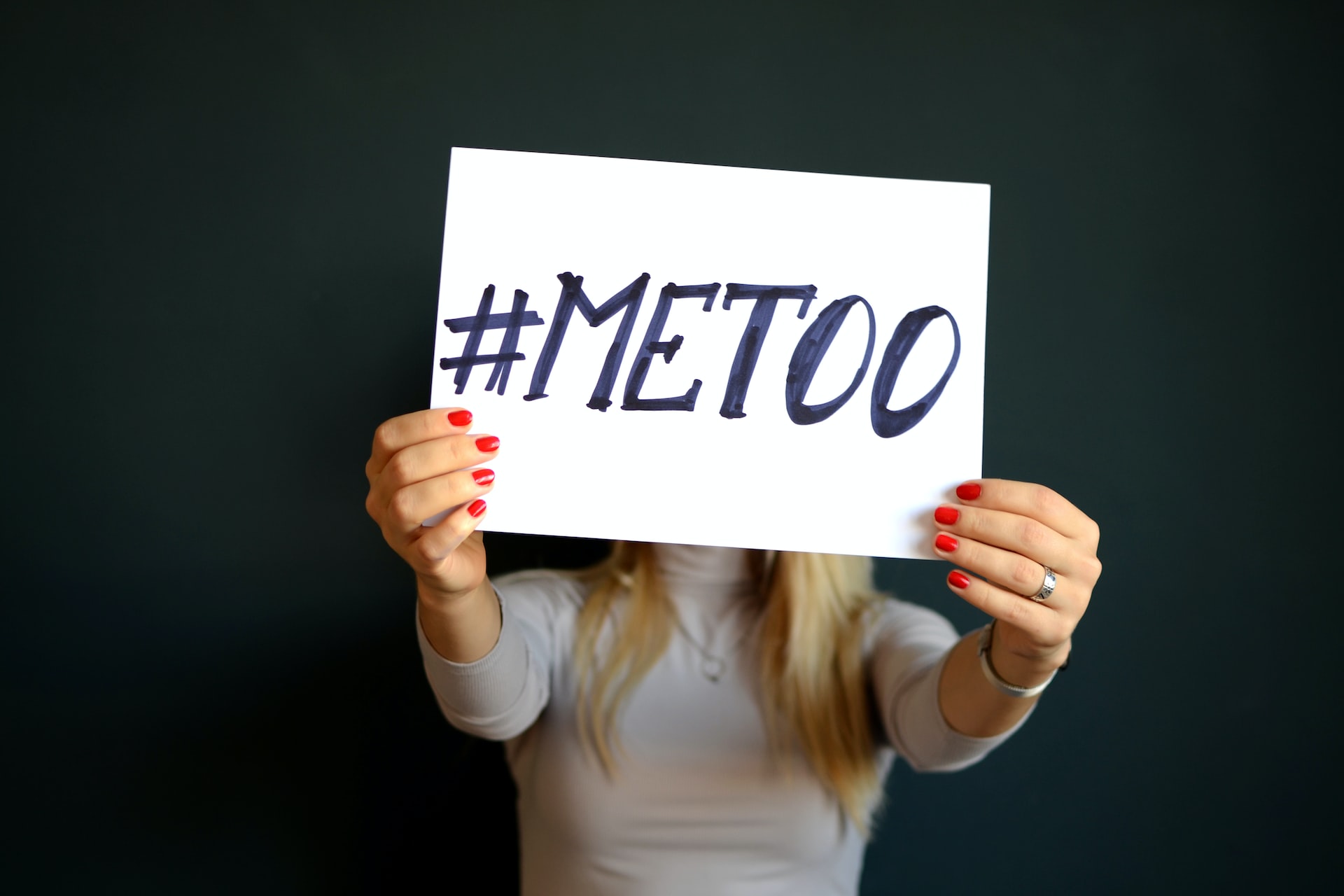The MeToo movement has opened the floodgates of conversation about sexual harassment and assault around the globe. As a result, it’s important to be informed and educated about this social movement. Let’s dive into five essential facts that everyone should know about it!
What is the MeToo Movement?
The Me Too Movement (or “MeToo”) is a global movement against sexual harassment and assault. It has spread virally through social media as a hashtag used to demonstrate the widespread prevalence of sexual assault, especially in the workplace. The phrase was first used more than a decade ago by American social activist Tarana Burke as part of her efforts to reach out victims of sexual violence. It was later popularized in 2017 by actress Alyssa Milano, who encouraged people to tweet about it in an effort to draw attention to the harassment and abuse many women experience on a daily basis.
The movement seeks to foster greater awareness and support for survivors of sexual assault and harassment, offering people around the world an accessible platform on which victims can share their stories without fear or judgement. It also seeks to challenge power structures that allow such abuse and calls for justice for survivors everywhere. This includes improving access to resources such as mental health services and legal assistance, encouraging employers to implement strong workplace policies on sexual harassment, and reforming laws that offer inadequate protection for victims of these crimes.
History of the MeToo Movement
The MeToo movement began in 2006 when activist Tarana Burke founded Just Be Inc., a nonprofit organization that sought to provide support to victims of sexual violence, particularly among African American women. The #MeToo hashtag was first used in 2007 by Burke as part of the campaign to raise awareness about harassment and discrimination against marginalized people. In 2017, the movement gained national and international attention after a myriad of prominent figures in the entertainment industry were accused of sexual misconduct.
The widespread allegations revealed by those who participated in the Me Too Movement triggered a global awakening and created an unprecedented solidarity among those who joined together to say “me too” to their own experiences with sexual harassment and assaultÑallowing individuals from all around the world to share their stories for the first time.
Since then, globally informed moments like Òme tooÓ emerged as powerful symbols for individuals to come forward with intimate experiences including rape, molestation, surviving misogynistic cultures at work, oppressive things experienced in relationships, body shaming and more.
Today, the Me Too movement continues to create an awareness not only around victimization but also prevention through education on healthy relationships and sex education, while also informing policy changes that hold institutions and systems accountable so those who prey on others will be held accountable and victims will be supported through healing opportunities.
Impact of the MeToo Movement
The #MeToo movement has had a profound effect on finding justice, both in the short and long term, for survivors of sexual violence. It has brought public awareness to the previous taboo topics of sexual misconduct and assault in workplace settings, while galvanizing people all over the world to raise their voices against these injustices.
Since its inception, organizations have seen dramatic shifts in their behaviorsÑ such as implementing non-disclosure agreements that prohibit any kind of harassment or providing more sensitivity training sessions for employees. Additionally, governmental bodies now have a higher bar for creating legal repercussions for those convicted of crime against victims.
In the larger sense, #MeToo continues to challenge the underlying social patterns that facilitate misogyny, discrimination and harassment Ñ which involves not necessarily punishing perpetrators immediately but also making continuous efforts towards creating safe environments for workplace intercourse and communication in order to avoid similar issues from ever happening again. Making powerful movements like this one visible and instilling long-term change into our society is one big step forward towards ending gender-based violence around the world.
Challenges Faced by the MeToo Movement
The MeToo movement has been successful in raising awareness about the widespread nature of sexual harassment and assault. However, there are still many challenges and obstacles that the movement has to overcome before true justice can be served.
First, investigations into sexual assault allegations can take an extremely long time – sometimes months or even years – leading to a feeling of helplessness among victims who are discouraged from speaking out due to potential delays in obtaining justice. Furthermore, the court systemÕs bias towards those accused, rather than the victims of a crime remains overwhelmingly present in cases like this, which makes it difficult for victims to receive a fair hearing.
It is also particularly difficult for those who have experienced sexual harassment or abuse at the hands of influential figures in power who use their power and resources to avoid accountability instead. In addition, traumatized victims may be too afraid or ashamed to speak out publicly about their experiences or relive them again during legal proceedings.
The MeToo movement aims to create a safe space for survivors by providing educational resources and creating an online community where individuals can tell their individual stories for support and solidarity with others who have experienced similar trauma. The movement further strives to challenge existing societal structures that enable mistreatment by holding those accountable perpetrator responsible for their wrongdoings and advocating for the proper treatment of survivors.
Solutions for the Challenges Faced by the MeToo Movement
The MeToo movement has been a catalyst in bringing crucial conversations about gender-based violence to the forefront of media and public discourse. As with any movement, there are many challenges that must be addressed to ensure that progress can continue to be made in dismantling systemic oppression and injustice. Here are five solutions for the challenges faced by the MeToo movement:
1. Eradication of Victim Blaming: Society as a whole needs to work together to eliminate victim blaming mentality by creating an understanding of what sexual abuse is and how it affects victims emotionally and psychologically. Cultural empathy should be promoted through education initiatives, media campaigns, awareness drives, workshops and expert resources that equip individuals with an understanding of why victim blaming is wrong.
2. Improved Support Systems: Governments, institutions and organizations must possess adequate and updated policies that have structural protections for victims from sexual harassment at home or in the workplace. Safe spaces need to be created so survivors feel safe reporting instances of harassment or abuse without fear of retaliation from employers or peers, as well as provide emotional support should issues arise during the reporting process.
3.Breaking Gender Stereotypes: In order for federal legislation regarding sexual violence issues to reflect the realities experienced by survivors around the globe it is important for lawmakers to understand how gender norms can lead to unequal opportunities between men and women in all aspects of life including job access or legal protections. Teaching people how they can take steps towards equally valuing both sexes starts at home; parents need to build a constructive environment which their children will grow up in with balanced views on gender roles helping nurture a generation who can go against groups whose actions could adversely affect women’s rights within society .
4. Reformative Justice Programs : The rhetoric around criminalizing perpetrators has shifted over time from punishment-centered models towards reformative justice models which integrate restorative practices ranging from counseling sessions or community service efforts being paired alongside traditional criminal justice systems strategies such as probation or imprisonment purposeful reforms like these provide long lasting benefits outside individual court proceedings ultimately leading society as whole into a more inclusive direction
5 Encouraging Young Voices : Organizations such as Girls United Global based out of South Africa are successfully changing societyÕs values by building support networks throughout educational institutions enabling access opportunities so young girls in particular feel empowered enough fight against behaviors considered unethical against women specifically when it comes down interpersonal disputes where they fear they might not have resources they need tackle those scenarios so often seen across both developing nations .
The overall message we try share relevant here younger generations need reliable outlets use their voices true change even if means voicing opinions few ever agree upon .
How to Support the MeToo Movement
The MeToo movement has had a huge impact on our society and culture in the last few years. This movement is dedicated to providing support and resources to empower survivors of sexual violence, allowing them to come forward and share their stories in a safe environment. While this movement has already sparked important conversations and rallied people around the world towards creating a safer environment for everyone, there is still much work to be done. Here are five ways you can help support the MeToo Movement:
1. Donate: By making a financial contribution to an organization supporting the MeToo Movement, you can help fund programming that will support survivors of sexual violence by providing them with legal aid, therapy, counseling and other resources they need in order to heal from their experiences.
2. Spread awareness in your community: Host an event or start conversations about the importance of supporting survivors through consent education, bystander intervention training and other awareness initiatives.
3. Educate yourself: Understand your privileges as well as develop an understanding of the complexity of gender-based violence on different populations, including gender minorities and women of color who frequently experience higher rates of abuse than others within our society.
4. Speak up when it matters: Challenge instances in which gender stereotypes and rape culture are perpetuated through humor or insidious messages in our everyday conversations with friends, family and colleagues at work or school.
5. Support survivors who have come forward: Believe any survivor’s account when they come forward – never discredit them or question their motives or experiences by engaging in victim-blaming behavior like suggesting that they should not have put themselves in that position or implying that harassing behavior is expected given someone’s gender or past history
Examples of Successful MeToo Movements
The MeToo movement is a powerful social movement that was designed to encourage survivors of sexual assault and harassment to come forward and demand justice. While the movement has sparked conversations around the world, it has also resulted in a number of successful initiatives and campaigns. Here are some examples of notable MeToo-influenced initiatives that have delivered successful results:
1. India’s Telangana government launched India’s first-ever Women Help Desk, which provides victims of cyberbullying, sexual assault and harassment with psychological counseling and legal advice as well as police protection.
2. The International Trade Union ConfederationÕs #ITUChange program works to improve working conditions in the fashion industry by strengthening labor standards and laws against gender discrimination.
3. In California, the Break The Stigma campaign was launched for wage inequality faced by female employees at Google, in which 14 employees publicly declared their intention to not work for companies where women were systematically paid less than men with similar job titles or seniority level positions.
4. In South Korea, Women Power Action Movement (WPAM) launched a campaign called “My Voice Counts” to support female victims exposing sexual harassment in the workplace by having them sign pledges against being silenced due to fear of victim blaming or shaming from coworkers or supervisors.
5. Time’s Up Legal Defense Fund supports victims everywhere by offering legal aid services such as legal advice, counseling sessions, financial grants and public relations assistance while they pursue cases related to workplace sexual harassment involving discrimination or retaliation since 2018 till present day globally too!
Future of the MeToo Movement
The MeToo movement is continuing to spread awareness of the prevalence of sexual harassment and assault around the world. Since it began in 2018, it has started a wave of discussions around how people should be treated and how survivors can and should be supported. The internet has been an invaluable tool, allowing individuals to voice their stories and build solidarity with many others who have similarly suffered harm at the hands of someone else.
Looking ahead, it’s important that we continue valuing the hard work done by MeToo activists so far and consider what needs to be done going forward. Here are five key points for moving forward in regards to the MeToo movement:
1. Address ongoing issues regarding survivor privacy: Survivors should have access to confidential support systems that guarantee privacy for their stories and testimonies.
2. Focus on finding resolutions for survivors outside of court proceedings: The fear or cost associated with formal legal proceedings often serves as an impediment for survivors, who might not pursue justice through these traditional channels. Alternate methods that provide resolution justice need to be made available, such as arbitration or restorative justice approaches if requested by the survivor(s).
3. Expand workplace policies against sexual harassment: Companies still lack effective tools to create safe structures within which complaints can be reported without victim-blaming or any other forms of gaslighting victims’ experiences by disbelieving them when they come forth with claims against someone more powerful than they are (i.e., power dynamics). We must use examples from companies that have been successful in creating a culture change regarding sexual harassment policies and replicate these best practices within other corporations as well as nonprofits, governmental entities, universities, etc., on a global scale — that goes beyond compliance laws but creates incentive programs towards fostering respectful environments through education about multiple forms of power-based violence (gender-based violence included). Again– protecting those less powerful from any type of exploitation is primordial in achieving meaningful change within organizations — otherwise non-compliance will only lead to further silence from workersÕ rights violations/harassment cases avoided due reporting fears or job retribution .
4 . Allow survivors time for healing: Instead of rushing cases into courtrooms too quickly or expecting too much from survivors initially after coming out with their story publicly as tension levels can be overwhelming procedures need to reflect larger considerations regarding healing times & space requirements (trauma informed care services should always take priority ) In addition, financial reparation must become part of these wider compensation schemes given its necessary role in allowing true recovery process opportunities (accessibility) & restoration processes after abuse has taken place since those expenses are necessary components financing towards true victim’s safety programs .
5 . Connect grassroots activists with lawmakers : Activism will lead informed conversations about norms; lobbying for policy changes is needed for laws that fully address newly demonstrated abuses which may not already have been criminalized under current statutes at local levels; linking both grassroots organizers – supporting people doing direct advocacy related tasks and legal scholars undertaking correct coding/law design processes can help match best evidence practices concerning articulated regulations & technical code writing demands adequately guiding policymakers towards definitive actionable agendas*** ensuring monitoring objectives are being enforced*** Also*** consultation efforts between civil society membersÑtailored services addressing community needs & desired outcomes alongside officialsÕ implementation oversight attempts vetted##






